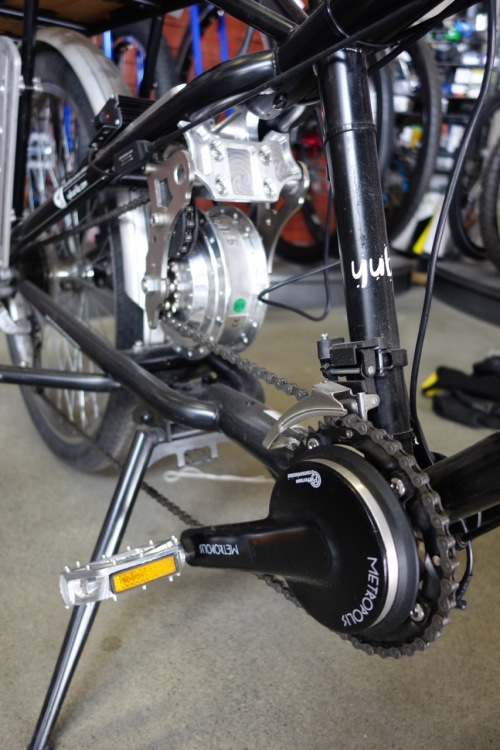Rick Perlstein’s Nixonland: The Rise of a President and the Fracturing of America (2008) is something of a biography, something of a history, and something of a quest to answer the question people have been asking about the 1960s since, well, the 1960s: what the hell just happened? This book is especially relevant to the world of 2016, which has so many tragic echoes coming hard and fast. We don’t have tanks patrolling Pennsylvania Avenue or whole neighborhoods on fire, but each day seems to make it less unthinkable.
Nixon’s career is a vast & billowing revenge play that could have been written by Dumas. There are early triumphs, humiliating defeats, and years of secret plotting in the wilderness. Then there is the “new” Nixon’s calculated reappearance after everyone thought him dead and gone, freely spending treasure of dubious origins, cavorting with highly weird & talented outsiders, making intricate moves within moves, shoving aside lightweights like Reagan, stepping over the bodies of Kennedys, and taking out his enemies with delicious patience, one by one by one.
But Richard Nixon isn’t the star of Nixonland. If he were, the book could be 1/3 as long and titled something like The Count of Yorba Linda. The bulk of Nixonland is about the land: the people in turmoil, from radicalized college student to marching black to shocked & resentful blue-collar worker. It’s about how they found their voices, how their personal identities adapted to the times, and how all that energy was deliberately harnessed by Nixon to serve his drive to power, creating the fractured political world we live in today.
An amazingly large segment of the population disliked and mistrusted Richard Nixon instinctively. What they did not acknowledge was that an amazingly large segment of the population also trusted him as their savior. “Nixonland” is what happens when these two groups try to occupy a country together.
Perlstein has a gift for emoting the intimate thoughts on all sides of iconic moments of crisis. Here’s one from the confrontation between the Students for a Democratic Society (SDS) and military police in the Pentagon parking lot in 1967:
From the same window where he’d seen Norman Morrison immolate himself, Robert McNamara gazed down upon the scene. TV cameras doted on the not-inconsiderable number of young women, yielding the weapon of sex. Some teasingly opened soldiers’ flies. Others placed flowers in the barrels of their guns. On the surface, a gesture of sweetness. Deeper down, for a soldier steeled for grim conflict, just doing his duty, it was the most unmanning thing imaginable: you are slaves, and we are free.

The book quickly skips along Nixon’s early life. While the usual Man Of Destiny tropes and narcissistic wounds are present (doting mother, demanding father, deaths in the family, deprivation, etc) they aren’t the point of the backstory. More interesting is his first campaign for student president at Whittier College. Nixon’s innovation was to forge insecurity and resentment, two emotions he always had in abundance, into a weapon sharp enough to chop an electorate into unequal halves. And then he made sure to scoop up the bigger half.
At Whittier, a small Quaker school, the well-dressed / bred / spoken snobs called themselves the Franklins and lorded over the rest of the students as per usual. Young Nixon formed his own club called the Orthogonians. He gathered up his fellow uncool classmates by preaching the nobility of being what they were: the commuter student, the striver, the uncharismatic underdog, the oppressed. Everything the Franklins were, the Orthos were not. Most especially they were not elite. Elites, after all, are by definition a minority.
Nixon’s core power base was, counterintuitively, among the jocks. He realized that on any sports team there are only a few stars supported by everyone else. As the least impressive but most enthusiastic player on the squad, Nixon worked his ass off to win the personal loyalty of the “silent majority” who take all the hits for the quarterback and yet never get the girl. It also didn’t hurt that a large number of the elites came to hate Nixon for his tactics just as much as he hated them for what they were. His other insight was that making the right enemies can be an asset.
Nixon won, to the shock of just about everyone. That he won was proof to the insecure underdogs that they were, in fact, a majority and had power –the power to elect Richard Nixon. By age nineteen he’d found his people. As Perlstein puts it:
Ever-expanding circles of Orthogonians, encompassing all those who ever felt their pride wounded by the Franklins of the world, were already his constituency. Richard Nixon was at their center, yet apart, as their leader. The circle could be made to expand… though via a paradox: the greater their power, the more they felt oppressed. When the people who felt like losers united around their shared sense of grievance, their enemies felt somehow more overwhelming, not less… Martyrs who are not really martyrs, oppressors who were not really oppressors: a class politics for the white middle class. The keynote of the new, Nixonian politics.

From there Nixon’s career didn’t exactly take off. He got a scholarship to Duke University’s new law school and finished third in his class. But only the top two students were hired by Wall Street. He applied to the FBI but was turned down because he had no connections. He got a job at the Office of Price Administration where he was finally a working peer of Ivy Leaguers, though he never fit in. In 1943 he joined the Navy. War experience was a must for an aspiring politician. Lieutenant Nixon administered cargo logistics and took money from anyone foolish enough to play high-stakes poker with him at Nick’s, the bar he ran on the side. After the war Nixon’s poker winnings financed his first Congressional race.
Nixonland walks through all of his elections and administrations with great pacing and style. It picks apart every dogwhistle and ratfuck maneuver, with all the real inside slimeball details you wouldn’t believe if I told you. His ratcheting of Lyndon Johnson’s paranoia in 1966 was especially masterful. But instead of summarizing a 900-page American epic, I want to examine the particular tactics Nixon used to develop his politics of resentment that carry through to today. He didn’t invent most of these, but was a genius at wielding them.
Choose one (1) main issue to frame the debate. Sometimes this means third-way compromises like calling for an end to the dancing ban at Whittier, which just meant the kids drove all over town looking for fun, in favor of regular chaperoned parties. Other times it means becoming a rabid anti-communist about ten minutes after Churchill delivered his “Iron Curtain” speech in 1946. The trick is to find the right issue to exploit (not solve, exploit) in a way that creates a majority on your side.
Limit your opponent’s freedom of movement. His opponent at Whittier couldn’t very well come out against dance parties, and seconding Nixon’s proposal won him no points. Truman couldn’t appear too anti-communist in 1946 because, as the country’s top diplomat working to rebuild a Europe half-occupied by the Red Army, he had to work with them. You could safely call Truman soft on commies –hell, he’s almost a communist himself– and he couldn’t answer. Since he was also the top Democrat this tarred his party members too. And since those party members couldn’t not support their President…
Lie like a bastard. Nixon’s first congressional opponent, Jerry Voorhis, had once been a Socialist Party member. Until 1946 this was neither unusual nor worthy of comment. Nixon kicked off his campaign by accusing him of being funded by Communists and that his votes in Congress were controlled by Moscow. A Socialist is not a Communist, but whatever. An undiscovered lie does no damage to you, and a discovered lie still takes more energy to refute than to say. Also (see below), a lie can be constructed to blow up twice.
Don’t attack, invite attack. Act wounded. Then pounce. That accusation of Communist funding against Voorhis was cleverly made: Nixon talked about the “PAC” (political action committee) funding Voorhis, which at the time everyone assumed meant the famous and wealthy CIO-PAC. That PAC indeed had a commie purge later on but never endorsed Voorhis. When pressed, Nixon would “clarify” that he meant the tiny and obscure NCPAC, which had endorsed Voorhis. Then when he was accused of misleading voters about which PAC he was talking about, Nixon pulled out a list of board members who served on both PACs. An interlocking directorate! The ugliest tactic used by the financial elite against the people. And there stands Voorhis, folks, trying to cover up his commie backing with dirty tricks. Is there nothing he won’t stoop to?
Sex! Nixon’s most memorable smear came during his first Senatorial campaign. After a pious speech about running clean in deference to his female opponent, he did to her what he did to Voorhis, but with a twist: “Helen Douglas is pink right down to her underwear.”
Meld separate sources of resentment or fear into one. Strictly speaking, it’s not possible to be both a financial elite and a communist at the same time. But the odds are good you didn’t notice that tactic being used above. Merging different classes of bad people into one Other is powerful juju.
There are many great examples of the angst Nixon and his agents strategically stirred up. Imagine you were a construction worker in 1970, just making an honest wage. You voted for Lyndon in ’64 because the unions endorsed him. Now, night after night on TV you see rich college kids protesting and taking over campuses and getting laid and doing drugs and supporting the commies and insulting our troops and most of all throwing away an opportunity you never had. And all you hear from the media is how they are the future. Yeah, a future of pot-smoking elitist spoiled-brat pinko thugs. Now you see from your worksite a bunch of them with the mayor, for chrissake, lowering the American flag to half-mast because some of them got shot making trouble at Kent State. It gets to the point where you just want to round up your buddies and go beat the crap out of some hippies.
That actually happened. And then Nixon turned them into his new constituency:
Nixon had tried to talk to the student demonstrators. He concluded he preferred the hard hats. “Thinks now the college demonstrators have overplayed their hands,” [Bob] Haldeman wrote in his diary, “evidence is the blue collar group rising against them, and [the President] can mobilize them.”
New York construction workers now took every lunch hour for boisterous patriotic demonstrations. So did hard hats in San Diego, Buffalo, and Pittsburgh. Some of the rallies were not entirely spontaneous: “Obviously more of these will be occurring throughout the nation,” White House staffer Stephen Bull wrote in a memo to [Special Counsel to the President] Chuck Colson, “perhaps partially as a result of your clandestine activity.”
[…]
Blue-collar whites “feel like ‘forgotten people’, those for whom the government and society have limited, if any, direct concern and little visible action.”
[…]
The hard-hat ascendency set into motion a qualitative shift: the first concerted effort to turn the white working class, via its aesthetic disgusts, against a Democratic Party now joining itself to the agenda of the smelly longhairs who burned down buildings.
[…]
The Republican business class, small-town America, backyard-pool suburbanites, Dixiecrats, calloused union members: now it was as if the White House had discovered the magic incantation to join them as one. Nixonites imagined no limit to the power of this New Majority: “Patriotic themes to counter economic depression will get response from unemployed,” Haldeman wrote in a note to himself. Then no one would be a Democrat anymore.
Hire eviler bastards than you. Nixon kept several henchmen more cleverly ruthless than he was working in the background. It is not a coincidence that his TV advisor, who made sure that Nixon never again had a mis-step or false note on camera, was none other than future Fox News founder and leggy-blonde-employer (Sex!) Roger Ailes. It was not a coincidence that Chuck Colson seemed to have his fingers in every dirty trick, illegal slush fund, and banker box full of cash exposed by the Watergate investigations. It was definitely not a coincidence that Peter Brennan, the union leader who organized the biggest of the Hard Hat Riots, was later named Secretary of Labor.
Megatrends shift allegiances. By the 1950s, the liberals had done their jobs too well. They truly had been the representatives of the people. They lifted them out of poverty, protected them with labor laws and union organizing, led the war against fascism, and then built the fabulous postwar economy based on consumerism and endless bounty. Now they were caught in a cleft stick: the common masses they’d raised up to become middle class insisted on staying so common. Liberal elites were already taking haughty pride in not owning a TV when TV was just becoming the must-have luxury. The cultural disconnect was accelerating.
More to the point, the new middle class had enough free time and resources to consider becoming Republican. And Richard Nixon, with his modest personal finances and humble beginnings, cloth-coated wife, and the nous to hire TV executives to run his campaigns, was right there waiting for them.
Media. True political upstarts grasp the potential of new mediums of communication faster than anyone. Martin Luther waged the first propaganda war with the printing press. Hitler conquered Germany with a radio mic. Barack Obama used social media (and the endless optimization tests it enables) to raise more money from more people than anyone thought possible. As of this writing Donald Trump is proving out the idea that old media is only useful as a dumb pipe.
Richard Nixon was the first TV politician. Today what most people remember are his debacle of a TV debate against Kennedy in 1960, and perhaps his resignation speech in 1973. But right after he was named Eisenhower’s running mate in 1952, Nixon was almost cut loose after allegations surfaced that he took $18,000 in “secret funds” from donors. Eisenhower let him twist in the wind for days, neither firing or defending him, and then told him to go on TV to defend himself. Eisenhower would then decide based on the telegrams he got in response.
The result was the “Checkers Speech“, one of the most egregious and genius appeals to emotion I have ever watched. At the time it was seen and heard by 60 million people. It generated four million responses, which ran over 98% in favor of keeping Poor Richard on the ticket.
Columnist Robert Ruark later wrote that Nixon had “suddenly placed the burden of old-style Republican aloofness on the Democrats.” It was the advent of right-wing populism. It chopped the middle-class heart right out of the liberal constituency, and it came out of nowhere.
“There goes my actor,” his high school drama teacher, in whose productions Nixon had excelled, pronounced to her TV in disgust. Though this wasn’t just an act. And it wasn’t just sincere. It was a hustle; and it was from the heart. It was all those things, all at the same time. And it worked.
From that moment on, liberals prided themselves in seeing through the hustle, seeing through Tricky Dick Nixon, while conservatives prided themselves in seeing through the liberals. This was the moment when both sides became sides. We live separated by Nixon’s polarizing lens, seeing right through and talking right past each other. We are convinced that if the other side’s values ever won, America itself would end. It hasn’t yet, but it always seems poised to do so. Welcome to Nixonland. Population: You.










































































